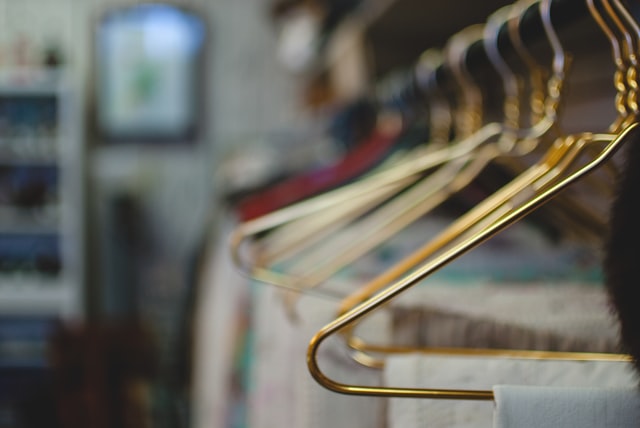Fashion trends can change as quick as the seasons. To keep on top of this, many people splurge on clothing and discard last year’s garments. As your fashion sense evolves, it may be tempting to go shopping and buy yourself a new wardrobe. However, these unnecessary purchases are harmful to the environment, with an estimated £140m worth of clothing sent to landfills every year in the UK.
Retail brands can design, produce, and sell clothing at an incredibly rapid pace. Now, Asos is capable of adding up to 7,000 new products on its website every week. This process of speedy production and distribution is known as fast fashion, and it is detrimental to the environment. The global clothing sector is responsible for anywhere between 2-10% of global carbon emissions.
If you want to be part of the solution and tackle the climate crisis, you can start by changing your shopping habits. There are many ways you can reuse your old clothes and reduce your carbon footprint. Here are some tips about upcycling your favourite old items and buying second-hand clothes, so that you can avoid participating in fast fashion trends.
Upcycling old favourites
To stop yourself from binging on the latest fashion trends, you can upcycle your favourite old pieces. Although this may seem daunting, you don’t need to be a professional seamstress to start upcycling. If you learn some basic sewing skills, you’ll be an eco-conscious stylist quicker than you might think!
Start simple and transform everyday items of clothing into fashionable statement pieces. To upcycle a simple t-shirt into a stylish top, grab a pair of scissors and tailor the fabric to your body shape. But why stop there? You can chop jeans into trendy bucket hats, hoodies into eye-catching corsets, and tights into socks. As well as learning a new skill, you will be reducing the amount of clothing you buy and lowering your carbon emissions. What could be better than that?
The wonders of upcycling aren’t limited to your own wardrobe. Fashion trends repeat themselves every 20-30 years, so some of your parent’s favourite items may be considered stylish once again. As well as this, you can organise a day to share and swap old clothes with your close friends. Not only is this a fun way to spend time trying on new clothes, but it will also save you a lot of money!
Sharing old children’s clothes
If you’re a parent, you’ll understand that children outgrow their clothing within the blink of an eye. Considering a child grows an average of 6-7cm per year, it’s no wonder that we’re continuously buying new outfits.
To be as fashion-conscious as you can, consider recycling your children’s old clothes and giving them to someone who needs it. A good quality baby dress can be used multiple times and for far longer than it takes for your child to grow out of it! Whether you plan to give them to your friends and family or donate to a local charity shop, this is a great way to reuse old clothing.
Buying recycled or second-hand clothing
Recycled clothing may be one of the solutions we’re searching for. As we strive to reduce our fast fashion consumption and reuse our old clothing, companies are leading the way with recycled clothes, accessories, and more. Multiple retailers are beginning to offer recycled lines, such as Cath Kidston, who has released a Rose Revival line. Made out of luxe recycled twill, these items are fashionable, durable, and kinder to our earth.
As well as buying recycled clothes, you can reduce your carbon footprint by buying second-hand clothing. Charity shops are a great way to find pre-loved clothing, and they’re growing in popularity. In fact, Age UK has reported a 25% increase in sales since the start of the pandemic. A trove of hidden treasures, you never know what you’re going to find in a charity shop and they can satisfy even the most insatiable shopaholics.
The emergence of second-hand selling websites and apps has encouraged people to shop sustainably too. In fact, eBay has saved 720,000 tons of carbon emissions through re-selling goods on the internet. Depop, a clothing reselling app, is popular among younger generations, with a third of Gen-Z owning an account. As more people buy second-hand clothing, there will be a decrease in demand for fast fashion. This will reduce carbon emissions within the clothing industry, transferring the fashion monopoly from retail giants to Depop sellers.
Fast fashion may seem tempting, but there is so much to gain from shopping sustainably. Between the emergence of reselling platforms to upcycling and sharing old clothes, consumers have many opportunities to reduce their carbon footprint. Rather than spending an extortionate amount of money on fast fashion brands, these are some ways you can tackle climate change one item of clothing at a time.
Sources
https://wrap.org.uk/taking-action/textiles
https://www.theatlantic.com/magazine/archive/2021/03/ultra-fast-fashion-is-eating-the-world/617794/
https://www.bbc.com/future/article/20211105-how-carbon-might-go-out-of-fashion
https://www.cosmopolitan.com/uk/fashion/news/a26528/how-to-upcycle-clothes-tips/
https://www.voicesofgenz.com/post-1/why-do-fashion-trends-come-back
https://kidshealth.org/en/parents/growth-6-12.html#:~:text=Kids%20tend%20to%20get%20taller,and%20how%20they’re%20growing.
https://www.express.co.uk/news/nature/1455509/fast-fashion-shopping-high-street-retailers
https://www.cathkidston.com/en-gb/prints/shop-by-print/rose-revival/


